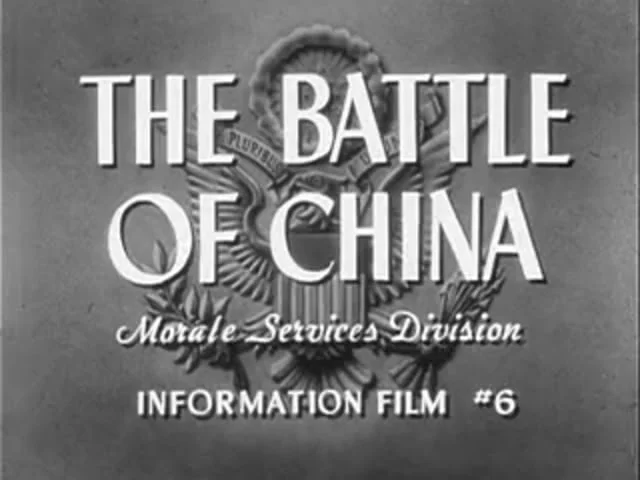- Movies, Videos & Audio
- Military Documentaries
- The Battle of China “Why we Fight” (1944)
The Battle of China “Why we Fight” (1944)
The Battle of China “Why we Fight” is a motion picture film that explores Japanese aggression in a series of seven information Films
The Battle of China “Why we Fight” is a motion picture film that explores Japanese aggression in a series of seven information Films and was the sixth film of Frank Capra's Why We Fight propaganda film series.
Reel 1:
Japanese planes bomb Shanghai; citizens flee. Describes Chinese development of the compass, printing, astronomy, gunpowder, and porcelain. The reel shows views of the Gobi Desert, sampans, and types of architecture and statuary. Japanese artillery fires and cavalry advances. The reel also describes Japanese plans for world conquest; contrasts Japanese unity with Chinese disunity. Footage also shows Emperor Hirohito.
Reel 2:
Shows Sun Yat-sen and uprisings against the Manchu dynasty. Students go abroad. Hospitals, highways, schools, and factories are constructed. Children play at school. Emperor Hirohito reviews Japanese troops; tanks roll down a street. The reel shows a Japanese munitions factory, a Japanese fleet at sea, troops marching, the Army occupying Manchuria, views of the League of Nations as the action is condemned, the Great Wall of China, the puppet premier Pu-Yi, Japanese attacking Chinese at Marco Polo Bridge in 1937, and Chiang Kai-shek.
Reel 3:
Shows street and harbor scenes in Shanghai, the bombing and naval bombardment of the city, street fighting, and the city's capture by Japanese units. Japanese troops advance toward Nanking. The gunboat Panay is bombed in the Yangtze. The reel also shows fighting in and around Nanking.
Reel 4:
The battle continues. Footage describes Japanese atrocities during the rape of Nanking and shows dead and injured civilians. Chinese demonstrate against Japan. Chiang Kai-shek speaks. Hordes of Chinese emigrate to the West carrying their belongings with them.
Reel 5:
Shows the establishment of the new Chinese capital at Chungking. Air raid shelters are dug; the city is bombed. The reel shows an underground factory, fires being fought, recruits for the Chinese Army, the Flying Tigerstaking off, and Japanese units occupying the Chinese coast.
Reel 6:
Coolies repair and expand the Burma Road by hand; trucks move over it. Dikes on the Yellow River are blown up to stem a Japanese offensive on Chengchow. Guerrillas ambush a Japanese patrol. Japanese planes attack Pearl Harbor. Footage shows the Japanese high command.
Reel 7:
Japanese units advance against Changsha, their supply lines are cut forcing their withdrawal, and the Chinese infantry advances. Footage shows Generals Douglas MacArthur and Joseph Stilwell. Madame Chiang Kai-shek addresses the U.S. Congress. The Ledo Road is constructed; transport planes fly over "the Hump." The "Flying Tigers" bomb Japanese airfields in China.
- British Burma (1824-1948)
- Republic of China
- Japan
- United States
- English
- Second Sino-Japanese War (1937-1945)
- Pacific War (1941-1945)
- {{#owner}}
- {{#url}} {{#avatarSrc}}
{{name}} {{/url}} {{^url}} {{#avatar}} {{& avatar}} {{/avatar}} {{name}} {{/url}} - {{/owner}} {{#created}}
- {{created}} {{/created}}

























